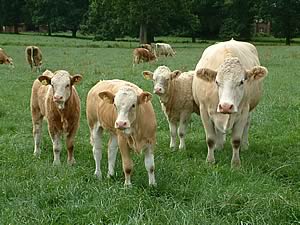 |
|||||||||
|
|||||||||||||||||||
Worm
Cattle For Economic Growth This Season Cattle farmers currently considering their worming strategy for the 2006 grazing season must now put the emphasis firmly on maintaining economic growth, says Schering-Plough Animal Health.
With the removal of headage payments, it now makes financial sense to keep young grazing cattle growing as fast as possible towards an earlier finish - any first season growth setbacks due to worms will be costly, the company points out. “It’s now crucially important that worming regimes keep the worm challenge low enough throughout the full grazing season to avoid growth checks,” stresses livestock veterinary adviser Paul Williams. For optimum efficacy, he advises producers to make sure their wormer offers a uniformly long period of grazing cover for all the different economically-important worms, not just one species. “To be effective, worming regimes must also follow product manufacturer guidelines to the letter, deliver a financial return, be easy-to-manage and allow natural immunity to develop so that wormers are not needed for older cattle,” he maintains. Schering-Plough, manufacturers of Autoworm - the only pulse product that automatically worms cattle every three weeks against all the important worm species - has developed a six-point effective worming plan for the 2006 grazing season. “The aim is to help farmers choose the right worming strategy for economic cattle growth,” Paul Williams says.
|
|||||||||||||||||||

|
|
||||||||||||||||||
| home | agri-services | pedigree
pen | news | dairy | beef | machinery quota | property | organisations | site map |
|||||||||||||||||||
